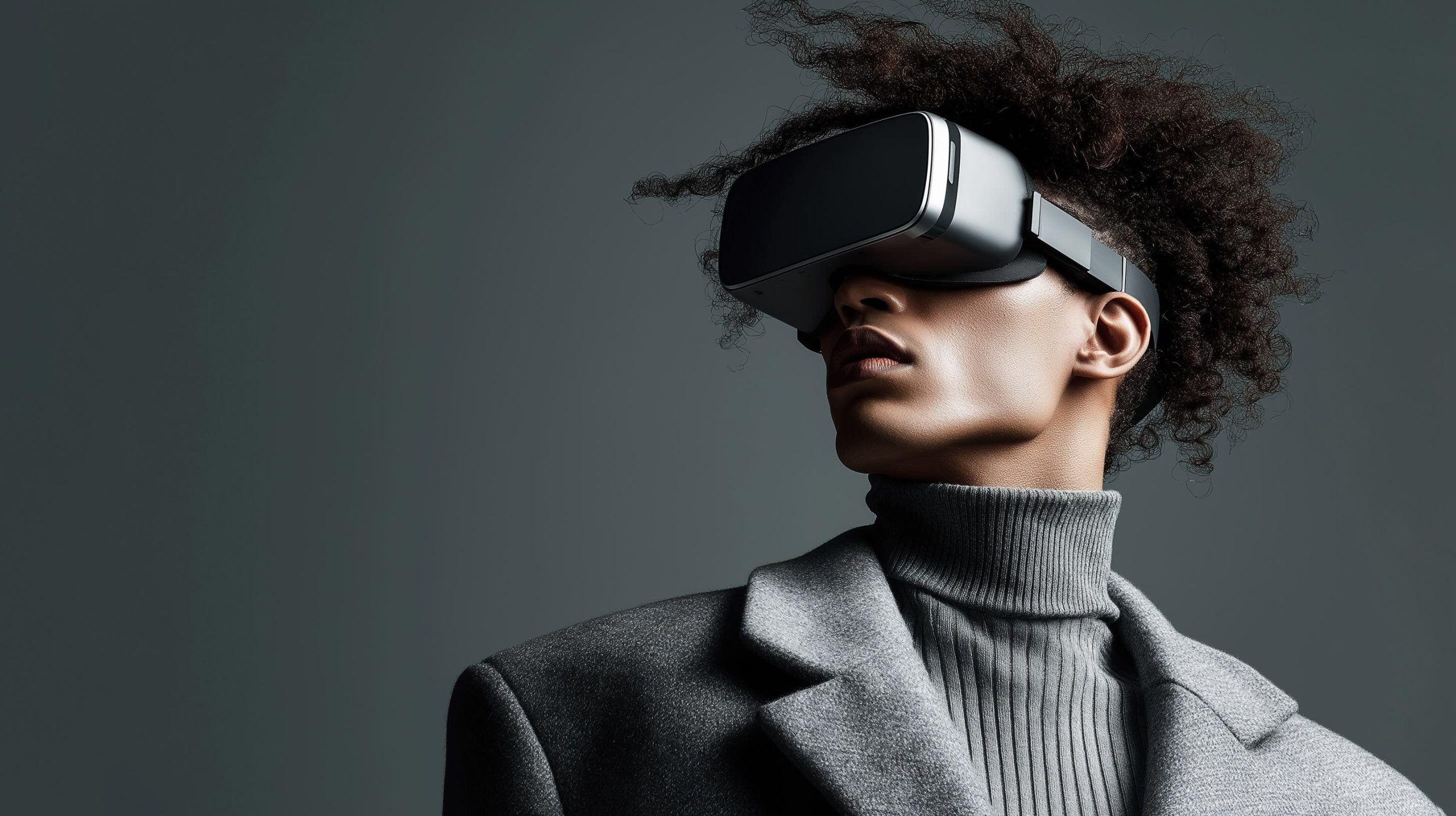- Apple WWDC 2025: Vision Pro gains visionOS 26 with integrated generative AI, smarter 3D widgets, enhanced photos and videos, and multi-user FaceTime in virtual spaces, plus support for external controllers including PlayStation VR2 Sense for 6DoF tracking and haptics.
- Bloomberg reports an upgraded Vision Pro with a faster M4 chip and lighter design could arrive as early as this year, though likely not at a lower price.
- Google and Samsung’s Android XR alliance centers on Project Moohan, a secretive headset running Android XR with ultra-high‑resolution micro‑OLED displays and a limited initial run of about 100,000 units in 2025, powered by Google’s Gemini AI.
- Snap plans to launch its first consumer Snapchat AR glasses in 2026, named “Specs,” described as lightweight and AI‑enhanced, after investing over $3 billion in AR wearables over 11 years and reaching 250 million monthly active users in India and over 300 million daily AR users globally.
- Cirque du Soleil will headline The Sandbox Alpha Season 6 with immersive experiences inspired by Luzia and another show, plus limited-edition Cirque NFT avatars as part of the tie‑in.
- Snapchat partners with the Palace of Versailles to offer “Dansez Versailles,” an AR experience that brings 18th‑century court dancers to life inside the palace.
- IDC data show XR headset shipments rose 18.1% year over year in Q1 2025, with Meta’s Quest accounting for about 50.8% of shipments and Apple’s Vision Pro expected to contribute modestly in 2025 as the market nears a 10‑million annual unit sales milestone.
- XPANCEO raises $250 million in a Series B at a $1.35 billion valuation to pursue the world’s first true AR contact lens for XR computing.
- Lumus expands its partnership with Quanta Computer to mass‑produce AR optics for next‑gen glasses as Qualcomm ships a second‑generation XR2 chipset powering most new headsets.
- EU regulators warn XR devices may intensively collect biometric and bystander data, prompting on‑device processing and privacy filters, while the EU Aviation Safety Agency last month approved an XR flight training simulator for pilots as geopolitics drive manufacturing diversification to Vietnam and a broader “China+1” strategy.
The past 48 hours have delivered a whirlwind of extended reality (XR) and spatial computing developments. From tech giants doubling down on AR/VR hardware and AI-powered headsets, to new partnerships bringing immersive experiences to life, the XR industry is buzzing. Below is a comprehensive roundup of the biggest XR news and insights from July 23–24, 2025 – including product launches, platform updates, expert commentary, regulatory moves, and industry shake-ups.
Tech Giants Double Down on XR Hardware
- Apple’s Vision Pro Evolves: At WWDC 2025, Apple previewed visionOS 26 for its Vision Pro headset, integrating generative AI to enhance immersive experiences [1]. The update adds smarter 3D widgets, lifelike detail for photos and videos, and even multi-user FaceTime sharing in virtual spaces [2] [3]. Notably, Apple also announced support for external controllers – even PlayStation VR2’s Sense controllers – enabling precise 6DoF motion tracking and haptic feedback on Vision Pro [4]. These upgrades show Apple “pushing the boundaries… in this new era of spatial computing,”said Mike Rockwell, Apple’s VP of Vision Products [5]. Meanwhile, rumors of a next-gen Vision Proare already swirling: a Bloomberg report suggests an upgraded model with a faster M4 chip and a lighter design could arrive “as early as this year,” though likely not at a lower price [6] [7].
- Meta eyes AR Glasses: Meta had no major hardware launch this week, but anticipation is building for its next moves. Leaks indicate Meta is developing smart AR glasses under its Reality Labs division [8], following the mixed success of Quest headsets. CEO Mark Zuckerberg has affirmed Meta’s long-term commitment to XR, and an upgraded Quest 3 (released late 2023) continues to sell steadily. Industry chatter suggests Meta’s first true AR glasses are in the works for 2025–26, aiming for a mainstream form factor. As one commentator noted, even a pricey new device from Apple “will signal to the rest of the field that Apple hasn’t given up on XR” – and by extension, neither can Meta [9].
- Google & Samsung’s XR Alliance: Google is teaming up with Samsung on Android XR devices to challenge Apple and Meta. Samsung’s secretive XR headset (code-named Project Moohan) – running Google’s Android XR platform – is expected to debut later this year. It may have been teased during Samsung’s Galaxy Unpacked event in July [10], though no details were announced onstage [11]. Reports suggest the device will feature ultra-high-resolution micro-OLED displays (from Samsung and Sony) potentially even “better than those found in Apple Vision Pro” [12]. Samsung is cautious, reportedly planning a limited initial run (~100k units) for 2025 [13], but the partnership with Google (and Qualcomm for chips) underscores a growing XR ecosystem forming around Android. Google’s AI capabilities will likely integrate as well – its upcoming Gemini AI is slated to power Android XR experiences on Samsung devices [14], paralleling Apple’s move to bake AI into VisionOS.
- Snap’s AR Glasses Roadmap: Snap Inc. is betting big on consumer AR. The company announced at AWE 2025 that it will launch its first Snapchat AR glasses for consumers in 2026, called “Specs” [15]. CEO Evan Spiegel revealed Snap has invested over $3 billion in AR wearables over 11 years [16]. The 2026 Specs are promised to be lightweight and “AI-enhanced”, able to recognize real-world objects and overlay information [17]. This move will “ratchet up competition with bigger rival Meta” in wearables [18]. In the meantime, Snap’s core AR user base keeps growing: Snapchat just hit 250 million monthly active users in India [19] and boasts over 300 million daily AR users globally [20] – an audience Snap can eventually migrate to its glasses. By seeding AR creators with its Lens Studio and partnering with firms like Niantic on geospatial AR [21], Snap is cultivating the content and developer ecosystem for its upcoming Specs.
New XR Features, Tools & Platform Updates
- Generative AI Comes to Spatial Computing: A key trend is the fusion of AI with XR. Apple’s visionOS 26update exemplifies this by using generative AI to create richer environments on Vision Pro [22]. For instance, the OS can generate interactive landscape backdrops, transform 2D photos into quasi-3D scenes, and even create “AI Personas” – intelligent virtual companions – populating your mixed reality space [23] [24]. Apple is also opening up widget customization in AR and supporting new content formats (180° and 360° video) from creators like Insta360 and GoPro [25]. These features, available to developers now [26], highlight how AI is augmenting XR to make experiences more personalized and lifelike.
- Cross-Platform Compatibility: XR platforms are becoming more interoperable. Apple’s surprise addition of PlayStation VR2 controller support on Vision Pro (via software) is one example [27] – a recognition that rich XR gaming and simulation may require existing VR peripherals. Likewise, platforms like OpenXR are gaining traction as industry standards so apps can run on varied headsets. Meta’s Quest ecosystem, Pico headsets (owned by ByteDance), and others all increasingly support OpenXR to ensure developers’ content works universally. This week also saw updates in VR game integrations – e.g., Civilization VII VR’s latest patch improved its UI on Meta Quest [28], and new VR titles across Quest, PS VR2, and PC were highlighted, signaling a steady stream of content for all major platforms.
- Enterprise & Developer Tools: On the enterprise side, Qualcomm used its “XR Day” in India to showcase new developer tools and use cases for its Snapdragon XR platform [29] [30]. Qualcomm demonstrated running a small language model (LLM) entirely on a pair of AR glasses – no cloud needed – using its Snapdragon chip AI capabilities [31]. This implies future AR glasses could have offline AI assistants and real-time scene understanding (“AI that sees what you see and hear what you hear” on-device) [32]. They also highlighted an initiative with Indian eyewear brand Lenskart to develop stylish smart glasses on Snapdragon chips [33]. These efforts aim to equip developers with robust XR frameworks and convince them that next-gen spatial computing hardware (from glasses to drones) can seamlessly run AI, 3D mapping, and multi-user experiences. As Qualcomm’s XR head Alex Katouzian noted, over “100+ MR, VR and AR devices globally are powered by Snapdragon XR” – and more are coming [34] [35].
- Haptics and Input Advances: Innovative XR accessories continue to emerge. While not in the past two days, a notable recent debut was the UDEXREAL UDCAP data glove at AWE 2025 – a lightweight glove that captures subtle finger motions with 0.1mm sensors, without any external cameras [36] [37]. It can plug-and-play into Unity/Unreal and works with all major VR headsets, providing lifelike hand tracking and haptic feedback for applications from robotic teleoperation to medical training [38] [39]. Such tech, along with advances in eye-tracking and pass-through cameras, is making XR interactions more natural. Even legacy inputs are being repurposed: e.g., Sony’s PS5 DualSense controllers are being used in some PC VR apps for their adaptive triggers, and researchers are exploring brain-computer interfaces for XR control (Meta itself acquired CTRL-Labs for neural interfaces in 2019). All told, the XR platform experience is rapidly improving – more precise tracking, more immersive feedback, and more seamless blending of the physical and digital.
Immersive Content and XR Collaborations
Major brands, creators, and even circuses are embracing XR to engage audiences in new ways:
- Cirque du Soleil Enters the Metaverse: In a headline collaboration, Cirque du Soleil is partnering with The Sandbox metaverse platform to bring two of its famed live shows into an interactive virtual world [40]. Cirque will headline The Sandbox’s Alpha Season 6 with immersive experiences inspired by its productions (including “Luzia” and another show) [41]. Users will be able to explore Cirque-themed virtual environments that capture the awe and artistry of its performances, complete with story elements and gameplay mechanics unique to The Sandbox [42]. Limited-edition Cirque NFT avatars and digital collectibles will be released as part of the tie-in [43]. “This collaboration opens up new creative avenues to bring the awe of our performances into immersive virtual spaces,” said Cirque’s VP of Digital Experience [44]. Sandbox’s CEO Arthur Madrid added that Cirque’s imaginative spirit will help “deliver the thrill of live spectacle in an interactive format” online [45]. Announced on July 24, this partnership between a world-renowned entertainment troupe and a Web3 metaverse platform underscores the trend of blending live events with XR – extending the reach of theatrical experiences to global virtual audiences.
- Snapchat’s Cultural AR Experiences: Social AR is also enabling unique cultural content. Snapchat recently teamed up with France’s historic Palace of Versailles to create an augmented reality experience called “Dansez Versailles.” Visitors can use Snapchat to see 18th-century court dancers come to life in the palace through AR, merging past and present [46]. This follows Snapchat’s strategy of location-based AR “lenses” for museums and landmarks. (Earlier this year Snap did similar AR art projects with the Eiffel Tower and partnered with Disney for an AR Star Wars exhibit.) These experiences not only enrich tourist attractions but also showcase AR’s power in education and cultural preservation.
- XR in Fitness and Sports: The XR fitness sector got a boost with new content from startups like Kinneta. On July 21, NYC-based Kinneta unveiled demo experiences that blend AR and VR workouts with gym machines, turning routine cardio sessions into gamified mixed reality adventures [47]. For example, an AR biking app might overlay a game on a stationary bike ride, or a VR rowing workout could put you in a virtual river race. Similarly, major sports are embracing XR: the NBA’s official NBA App now streams games in VR and offers AR highlights, and Formula 1 has experimented with AR goggles for pit crew training. These developments indicate that beyond pure entertainment, XR is increasingly used to boost wellness and sports engagement.
- Gaming and Virtual Worlds: The VR gaming scene continues to thrive with new milestones. Just outside our 48-hour window, the hit VR game Ghosts of Tabor (an immersive military shooter) launched on PlayStation VR2 and surpassed 1 million players, generating over $30M in revenue in its first year [48] [49]. The title’s success – now across Quest, PC VR, Pico, and PS VR2 with full cross-play – shows the demand for compelling multiplayer VR content. On the social VR front, Meta’s Horizon Worlds is steadily adding users (especially after opening to web and mobile), and platforms like Rec Room and VRChat remain popular hubs for user-generated content. Even legacy franchises are going VR; for instance, Assassin’s Creed Nexus VR is due for Quest, and Capcom’s Resident Evil 4 VR has been a top-selling Quest game. All of this points to a maturing XR content ecosystem – from AAA games to indie fitness apps to branded cultural experiences – that is engaging broader audiences daily.
XR Industry on the Rise: Investments and Market Momentum
After a rocky 2024, the XR industry is showing signs of real momentum in mid-2025:
- Headset Sales Rebound: Global shipments of AR/VR devices are growing again. In Q1 2025 the worldwide XR headset market “posted a strong rebound… growing 18.1% year-over-year,” according to the latest data from IDC [50]. This is a sharp turnaround from the declines of last year and suggests a “critical tipping point”may be near [51]. Meta leads the pack – the Quest lineup captured about 50.8% of all XR headset shipments in Q1 [52] – but competition is intensifying. Apple’s Vision Pro is expected to contribute modestly to 2025’s totals (with its limited initial release), while Pico (owned by TikTok’s ByteDance) and HTC Vive are also grabbing niche segments. Industry analysts note that historically, 10+ million annual unit sales is the threshold where network effects kick in for a consumer device; the XR sector is now approaching that range, indicating a healthy growth trajectory.
- Investor Confidence & XR Unicorns: Big money is flowing into XR startups and R&D. A standout example this month is XPANCEO, a Swiss startup developing smart contact lenses for XR computing, which just raised $250 million in new funding at a $1.35 billion valuation [53]. This enormous Series B round (one of the largest ever in AR hardware) will fuel XPANCEO’s race to deliver “the world’s first” true AR contact lens [54]. Likewise, other XR firms have recently secured major investments: e.g., Germany’s Holoride (in-car VR) and UK-based HaptX (haptic gloves) closed multi-million rounds earlier in 2025. Even as some XR ventures (like Magic Leap) restructured, venture capital for spatial computing is heating up again – buoyed by the broader tech investment surge in AI. The consensus is that XR, AI, and the metaverse concept are converging, and no one wants to miss out on the next computing platform. “The XR rebound is real — and it’s gaining serious momentum,” one industry newsletter declared, noting the spike in funding and interest across the board [55].
- New Players Entering the Fray: The competitive landscape is broadening beyond the usual FAANG companies. Notably, ByteDance – owner of TikTok – is reportedly building a mixed-reality headset, putting it in direct competition with Meta and Apple [56]. ByteDance already sells the Pico VR headset line in Asia and Europe; a new MR device would likely integrate TikTok’s social platform with immersive tech. Similarly, rumors persist that Tencent (China’s gaming giant) is investing in XR hardware or platforms, and that Amazon is exploring AR features for its Echo frames or an Alexa-enabled AR headset. In the enterprise sector, Magic Leap – after pivoting away from consumers – secured partnerships with healthcare companies for surgical AR solutions, while startups like Varjo and Unity are collaborating with automotive and aerospace firms for XR design tools. All told, the XR field in 2025 looks increasingly crowded, which bodes well for innovation and adoption.
- Manufacturing & Supply Chain Scaling: Behind the scenes, component makers are ramping up to meet XR demand. For example, Israel’s Lumus (known for its waveguide displays in AR glasses) expanded a partnership with Taiwan’s Quanta Computer to mass-produce AR optics for next-gen glasses [57] [58]. This deal, announced July 16, will help scale production of Lumus’s reflective waveguide lenses – a critical but hard-to-manufacture component – as more consumer AR wearables hit the market. On the chip front, Qualcomm’s XR2 chipset is now in its second generation and powers most new headsets (Meta’s and others), while rival chipmakers like MediaTek are launching XR-specific SoCs too. The displays used in XR (OLED microdisplays, mini-LED panels for VR, etc.) are also getting investments – e.g., Sony and Samsung Display are ensuring supply for Apple, Samsung, and others. All of these industry moves signal that XR hardware is moving toward mass-market scaleover the next 1–2 years.
Challenges, Expert Commentary and Policy Outlook
Even as XR surges forward, industry experts and regulators are urging caution on certain fronts:
- Reality Check on Adoption: Analysts note that XR hasn’t fully gone mainstream yet, and some skepticism is healthy. A recent Forrester research report pointed out that “high costs and a lack of compelling use cases” have slowed enterprise XR adoption so far [59]. Many consumers still find current VR headsets too expensive or bulky for everyday use, and truly killer apps (beyond gaming) are still emerging. “Headsets are still considered more toys than get‑stuff‑done devices,” one Gizmodo tech columnist quipped, observing that even the best hardware faces an uphill battle convincing the average person to buy in [60]. Industry veteran John Carmack (formerly Oculus CTO) has also cautioned that VR needs to be “absurdly easy and useful” to escape the niche enthusiast market. The good news is that areas like training, design, and collaboration are demonstrating ROI for XR – as evidenced by enterprises investing in VR training platforms and seeing productivity gains [61] [62]. Still, experts suggest the XR community should temper hype with practical expectations, focusing on solving real user needs to drive the next wave of adoption.
- Privacy and Safety Concerns: With XR devices capturing ever more data about our lives and bodies, regulators have started paying close attention. European data protection authorities warn that advanced XR systems may intensively collect personal data – from a user’s precise head and hand movements to eye gaze, heart rate, and even brainwave signals [63] [64]. Such data, when analyzed, can potentially reveal sensitive traits or conditions (for instance, research shows head motion patterns in VR might hint at neurological conditions like ADHD or early dementia) [65]. There’s also the issue of bystander privacy: AR glasses with cameras might inadvertently record people nearby without consent [66]. Regulators in the EU have flagged these risks as incompatible with strict privacy principles unless mitigated [67] [68]. In response, XR companies are working on solutions like on-device processing (to keep biometric data off cloud servers), privacy filters that blur faces or license plates in AR feeds, and transparent LED indicators to show when glasses are recording. Expect increasing scrutiny on XR from lawmakers – similar to how drones and IoT faced regulation – to ensure things like safety standards, age-appropriate content, and data protection are addressed proactively. Notably, the EU Aviation Safety Agency (EASA) made history last month by approving an XR-based flight training simulator for pilots – but only after rigorous evaluation of its fidelity and safety [69] [70]. This shows regulators can embrace XR innovation, but evidence and oversight will be key.
- Geopolitical and Supply Chain Factors: XR is not immune to global politics. The ongoing U.S.–China tech tensions have directly impacted XR device manufacturing. Meta, for example, has begun shifting up to half of its Quest headset production out of China and into Vietnam, aiming to avoid potential tariffs on Chinese imports [71] [72]. This strategy is to maintain stable pricing – “if the US adds tariffs on Chinese goods, Meta would be forced to hike headset prices, hurting sales” [73]. Other companies are following suit in “China+1” manufacturing approaches, diversifying production to countries like Vietnam, Malaysia, and Mexico. Additionally, export controls on advanced semiconductors (enacted by the US and allies) could affect XR – since high-end VR/AR devices use cutting-edge chips and sensors that might fall under trade restrictions. On a different front, government investment in XR is rising: the U.S. military is pouring funds into combat AR systems (e.g. the Army’s IVAS program, now involving Microsoft and Anduril [74]), and nations like South Korea and Saudi Arabia have earmarked budgets for “metaverse development.” Geopolitics also extends to content: for instance, some countries have begun discussing content ratings for VR games or AR location-based services (to address virtual trespassing or propaganda concerns). The big picture is that XR’s growth is intertwined with global economic and political currents, and companies must navigate these wisely. On the positive side, the fact that multiple regions – North America, Europe, and Asia – are all vigorously pursuing XR could ensure the industry’s resilience and foster a healthy competition of ideas.
- Expert Voices – Optimism and Vision: Despite challenges, most XR insiders are optimistic about the long game. Qualcomm’s XR chief Savi Soin remarked this week, “India is leading a transformative shift in how reality is experienced… We envision a future where smart glasses become as integral to daily life as smartphones” [75]. This sentiment was echoed at the Snapdragon XR Day event, where the consensus was that spatial computing will eventually blend into everyday routines – from navigating with AR directions to having virtual monitors replace physical screens at work. Mark Zuckerberg recently stated that in his view, “the last decade [was] about smartphones, the next will be about VR/AR” – a bold claim, but one driving Meta’s investments. Meanwhile, developers like Tim Sweeney (Epic Games CEO) advocate for the open metaverse, imagining XR as a freely accessible extension of the internet. And creators are enthusiastic too: as Cirque du Soleil’s digital VP put it, “it enables us to bring the awe and artistry of our performances into immersive virtual spaces…interactive, social, and playful” [76]. Hearing such excitement from artists, tech CEOs, and engineers alike suggests that XR isn’t just a tech trend, but a creative movement. As one CNN tech column noted earlier this month, “virtual, augmented and mixed reality may finally be about to have their moment”, after years of promise – with the confluence of better hardware, AI, and content making the experience more compelling than ever.
Sources: Major news outlets, company press releases, and expert analyses were referenced in compiling this report. Key references include Apple’s WWDC announcements [77] [78], Bloomberg via Gizmodo [79], Qualcomm’s XR Day briefing [80], Auganix XR industry newswire [81] [82], IDC market data [83], The Next Web and CNN Tech reports [84] [85], and official statements from companies like Snap [86] and Meta. These provide a factual foundation for the developments described above, ensuring an accurate and up-to-date picture of the XR landscape as of July 24, 2025.
References
1. aibusiness.com, 2. aibusiness.com, 3. aibusiness.com, 4. aibusiness.com, 5. aibusiness.com, 6. gizmodo.com, 7. gizmodo.com, 8. www.auganix.org, 9. gizmodo.com, 10. 9to5google.com, 11. www.techradar.com, 12. 9to5google.com, 13. 9to5google.com, 14. www.thenationalnews.com, 15. www.reuters.com, 16. www.reuters.com, 17. fortune.com, 18. www.reuters.com, 19. newsroom.snap.com, 20. newsroom.snap.com, 21. www.reuters.com, 22. aibusiness.com, 23. aibusiness.com, 24. aibusiness.com, 25. aibusiness.com, 26. aibusiness.com, 27. aibusiness.com, 28. support.civilization.com, 29. insightconvey.com, 30. insightconvey.com, 31. insightconvey.com, 32. insightconvey.com, 33. insightconvey.com, 34. insightconvey.com, 35. insightconvey.com, 36. www.auganix.org, 37. www.auganix.org, 38. www.auganix.org, 39. www.auganix.org, 40. www.auganix.org, 41. www.auganix.org, 42. www.auganix.org, 43. www.auganix.org, 44. www.auganix.org, 45. www.auganix.org, 46. newsroom.snap.com, 47. www.auganix.org, 48. www.auganix.org, 49. www.auganix.org, 50. www.emsnow.com, 51. x.com, 52. www.techloy.com, 53. www.auganix.org, 54. www.thevrara.com, 55. x.com, 56. fortune.com, 57. www.auganix.org, 58. www.auganix.org, 59. thenextweb.com, 60. gizmodo.com, 61. thenextweb.com, 62. thenextweb.com, 63. www.edps.europa.eu, 64. www.edps.europa.eu, 65. www.edps.europa.eu, 66. www.edps.europa.eu, 67. www.edps.europa.eu, 68. www.edps.europa.eu, 69. thenextweb.com, 70. thenextweb.com, 71. overclock3d.net, 72. overclock3d.net, 73. overclock3d.net, 74. www.auganix.org, 75. insightconvey.com, 76. www.auganix.org, 77. aibusiness.com, 78. aibusiness.com, 79. gizmodo.com, 80. insightconvey.com, 81. www.auganix.org, 82. insightconvey.com, 83. www.emsnow.com, 84. thenextweb.com, 85. thenextweb.com, 86. newsroom.snap.com









